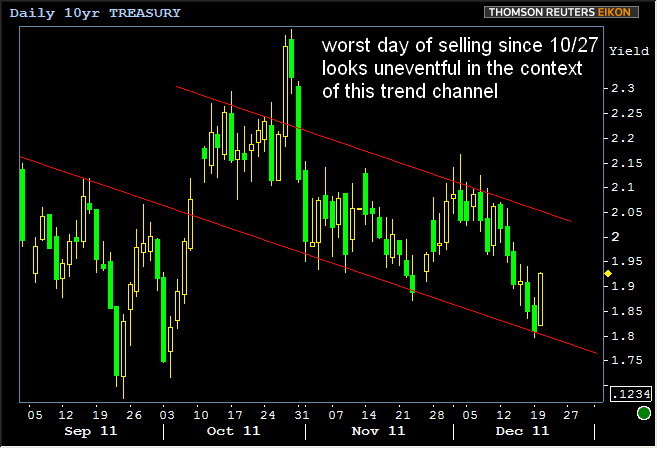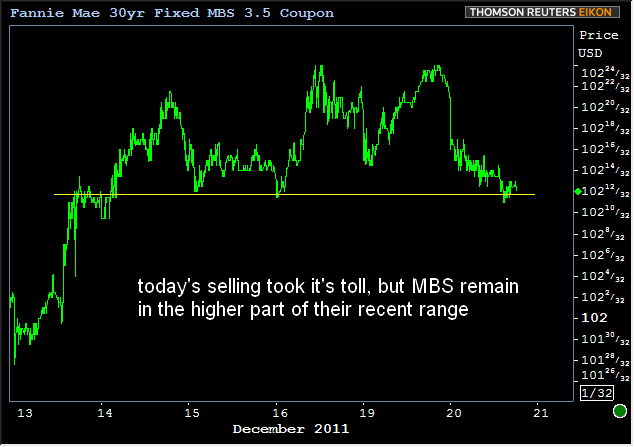Late November definitely felt like more of a sell-off than today, but in terms of single session 8am-3pm losses, 10yr yields rose the most since October 27th, just over 10 basis points. Although MBS weathered this storm quite well (discussed earlier, in more detail HERE), there's only so much spread tightening to be done before MBS have to give up a few ticks. That prompted an earlier alert from MBS Live:
MBS Hit Lows of the Day. Reprice For The Worse Reported 1:33PM
Shortly after 10yr yields broke an intraday supportive ceiling just over 1.91, Fannie 3.5's also gave up the fight at 102-13 / 102-14, falling a few more ticks to their lows of the day at 102-11 currently. This has been enough for the price leader to recall sheets, or perhaps in combination with a need to peel off some previous aggression in a "no-longer-blatantly rallying" MBS market. Because a 6 tick gap to the highs of the day is questionable reprice motivation in and of itself. Still, if one lemming jumps, others may follow, especially if MBS prices deteriorate further.
Other than the very slight potential for lenders to reprice for the worse, weakness in 10's isn't all that troubling at the moment considering trading levels and low volume. In this thin, year-end liquidity, it's not uncommon to see prices and yields pushed around further in any given direction than they otherwise would be. Moreover, the fact that today's Treasury sell-off kept 10yr yields within a trend channel is actually a good thing for MBS in the longer run as it indicates a bit less volatility in one of the benchmarks against which MBS are valued. To oversimplify, the flatter and more predictably 10's can trade, the tighter MBS yields can move to 10's, resulting in lower rates relative to more volatile alternate realities.


Tomorrow brings Existing Home Sales at 10am as well as the last of this week's note auctions with the 7yr at 1pm. But before any of that, the release of borrowing details from today's Long-Term-Repo-Operation (LTRO) in Europe stands the best chance to have an effect on domestic bond markets.





